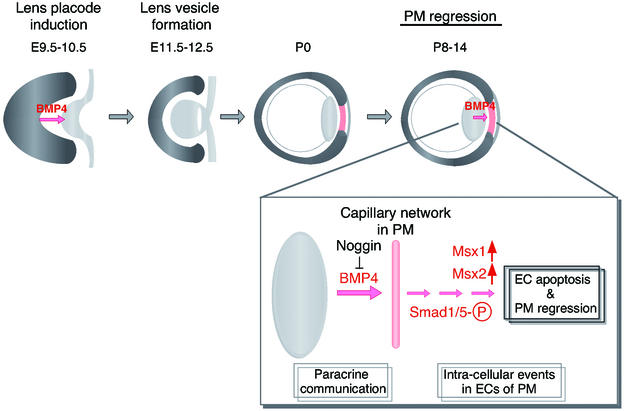FIG. 10.
BMP4 contributes to the development of the eye (a schematic model). At approximately embryonic day 9.5 to 10.5, the optic vesicle contacts with the surface ectoderm to induce lens placode. BMP4, one of the factors releasing by optic vesicle, is first detectable in the anterior region of the optic cup, and its activity is necessary for the lens placode induction during early stages of eye morphogenesis. Coordinated invagination of the lens placode and optic vesicle in the region of contact results in the positioning of the lens vesicle in the center of the bilayered optic cup (embryonic day 11.5 to 12.5). Reciprocal interactions between the lens vesicle and optic cup are required for continued growth and morphogenesis of the developing eye. During the later stages of ocular development, PMs nourishes the immature lens. Then, matured lens secretes BMP4, and this BMP4 activity is responsible for the apoptotic cell death in PMs (P8 to P14) to lead its regression as shown in this study. Although the phosphorylation of Smad1/5 was detected, it is not clear whether Smad1 and/or Smad5 is the mediator of apoptosis in PM.

